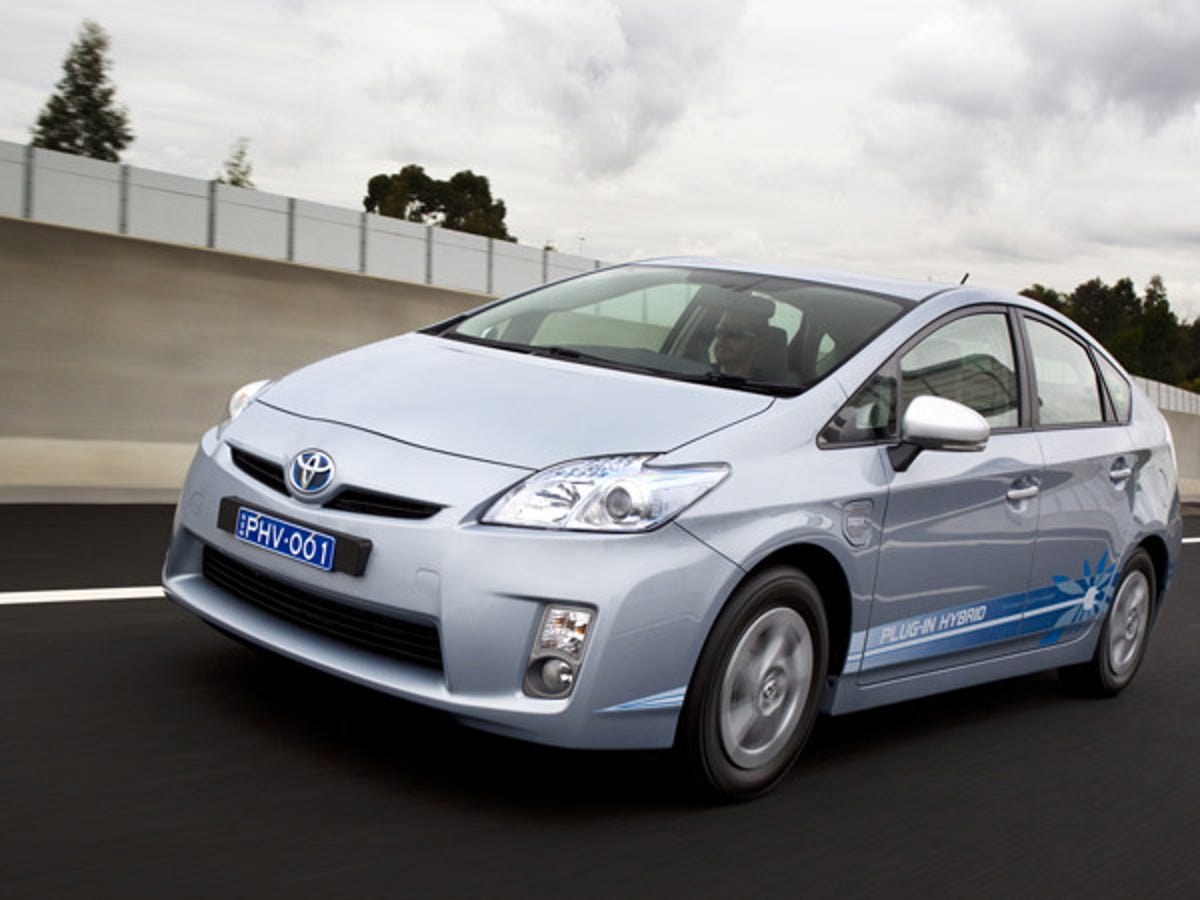Toyota Prius Plug-in Hybrid first drive
After Toyota's preview of its 2010 Sydney Motor Show stand, we got a rare chance to drive a plug-in version of its Prius hybrid hatchback.

Something standard
After Toyota's preview of its 2010 Sydney Motor Show stand, we got a rare chance to drive a plug-in version of its Prius hybrid hatchback.
The standard Prius features two engines (one electric and one petrol) delivering a total of 100kW. Either or both engines can drive the front wheels, depending on the situation.
A nickel-metal hydride battery pack powers the electric engine and is recharged automatically via a mixture of regnerative braking, engine braking and capturing excess energy from the petrol engine.
Something new
For the plug-in Prius, the engines are untouched but the standard car's nickel-metal hydride batteries have been replaced with 288 Lithium-ion cells.
This new pack raises the boot floor by 33mm, reducing luggage space from 445 litres to 391. On the upside, electric-only driving range is improved from 1 or 2 kilometres to around 20.
Range rover
The improved electric vehicle range translates better to a fuel economy figure, with the plug-in Prius rated at 2.6L/100km, compared to the standard Prius' 3.9L/100km.
Plug it in
With the longer electric vehicle range and greater battery capacity of the plug-in Prius, regenerative braking, engine braking and excess petrol engine output alone aren't enough to recharge the batteries.
A standard electric vehicle charging port allows the plug-in Prius to be fully recharged from mains power in about 100 minutes.
Weighty decisions
The up-rated batteries, larger radiator, power point and battery charger under the driver's seat (pictured) add 135kg to the Prius' weight — three-quarters of that difference is thanks to the Lithium-ion battery pack. Toyota has revised suspension, but not the brakes, to cope with the extra weight.
So what's it like to drive? Part I
As far as the ride and handling are concerned, the most obvious thing we could discern from our brief 4-kilometre drive was that the steering felt considerably heavier. Moving off from standstill there was only a small amount of electric engine whine — pretty much the same as a regular Prius.
So long as you don't think you're Craig Lowndes, the plug-in Prius will remain electrically propelled at speeds of up to 100km/h — on a normal Prius, the petrol engine cuts in at around 30 or 35km/h. At speeds greater than 30km/h, the eerie electric silence disappears, replaced by the gentle rumble of the tyres.
So what's it like to drive? Part II
For the plug-in version, Toyota has junked the EV Mode button because the car naturally defaults to electric power. Floor the gas pedal, though, and the unmistakable drone of the Prius' petrol engine is clearly audible.
Ch-ch-ch-changes
There's a revised in-dash energy monitor that can display remaining electric vehicle distance, time to full charge and electric/hybrid driving ratio.
Also present is a new air-con system that's designed specifically for cars operating primarily in electric vehicle mode. The new system can cool and heat the Prius remotely — the standard Prius' remote air-con can only cool the car. There's also a humidity sensor that allows the air conditioner to change automatically between ventilation and recirculation modes.
I want one!
Sorry, it's not for sale. Toyota is hoping to have a plug-in hybrid available in the US and Japan by mid-2012, though. The plug-in Prius we drove is one of only 600 in the world and was produced as part of a worldwide trial of the technology.
Five cars have been allocated for Australia, with one already earmarked for trials with the Victorian Government.

